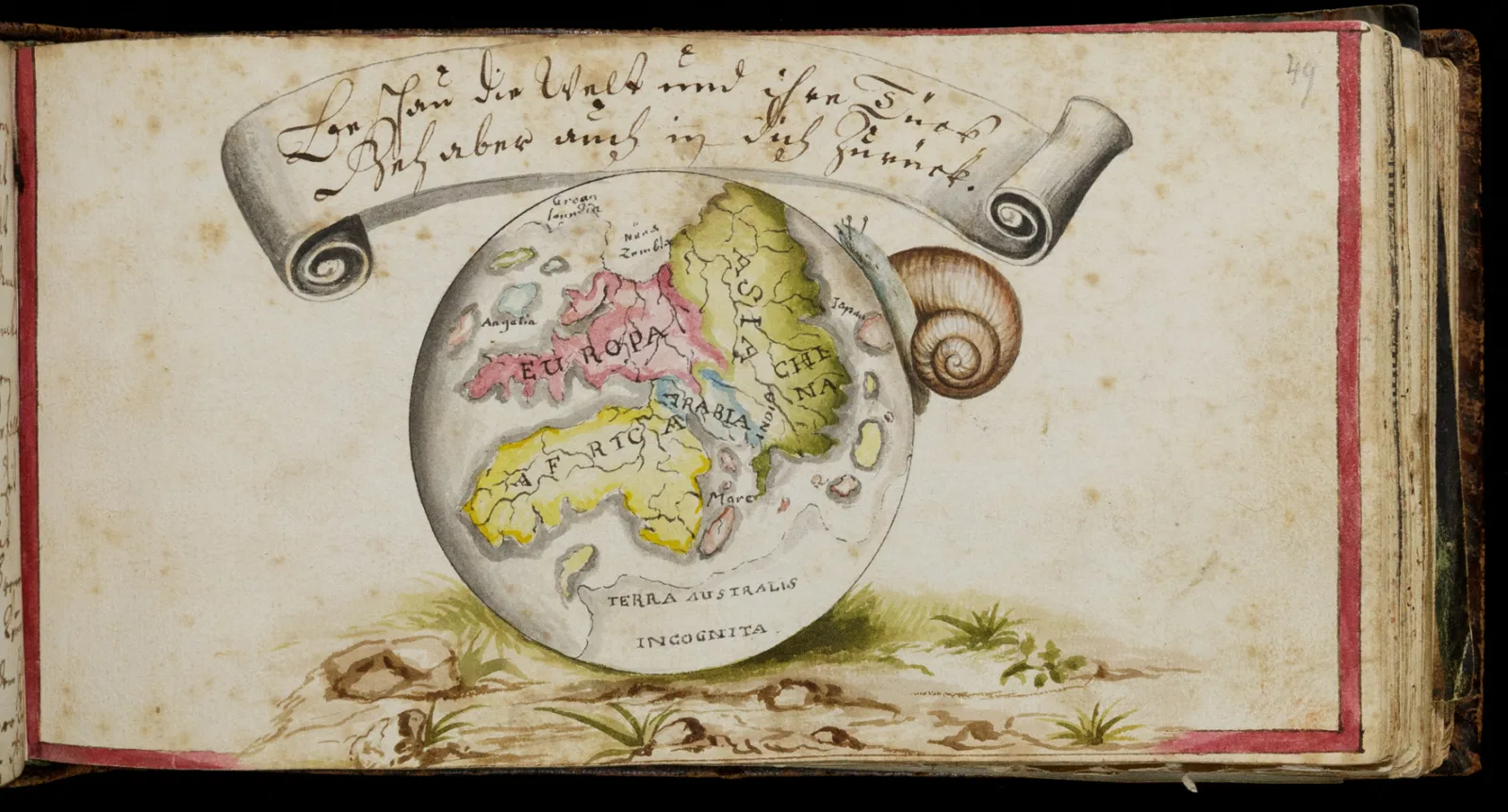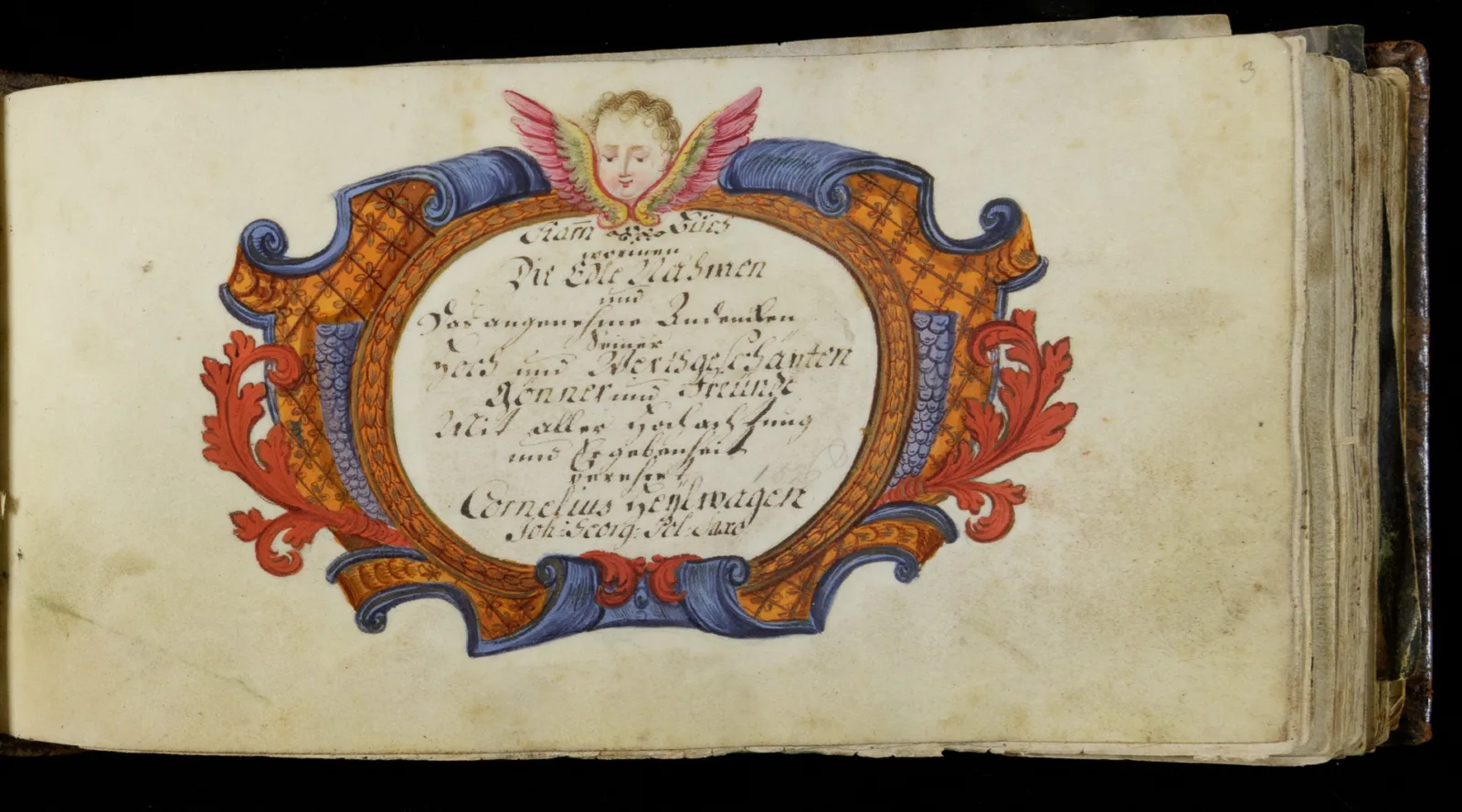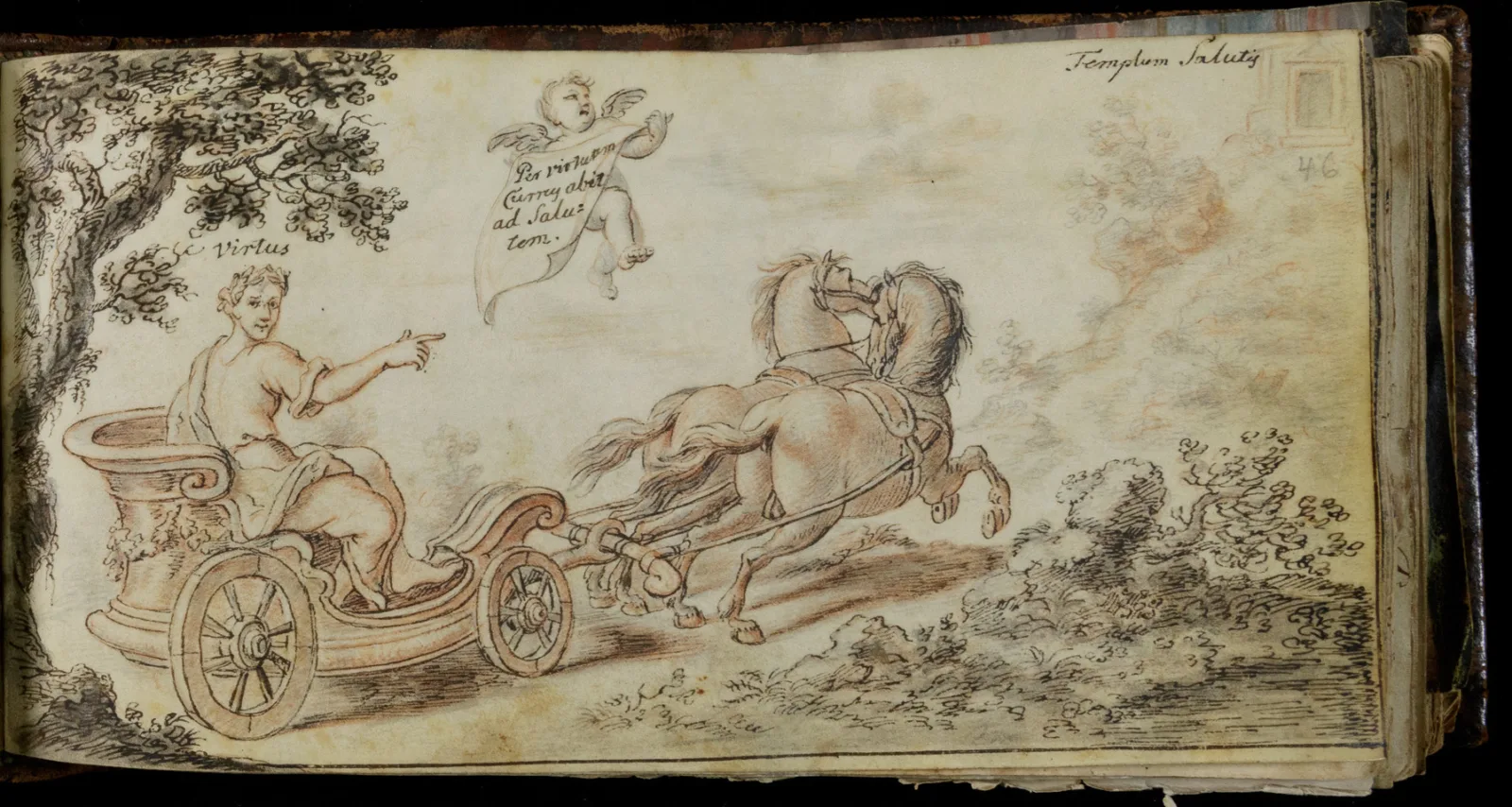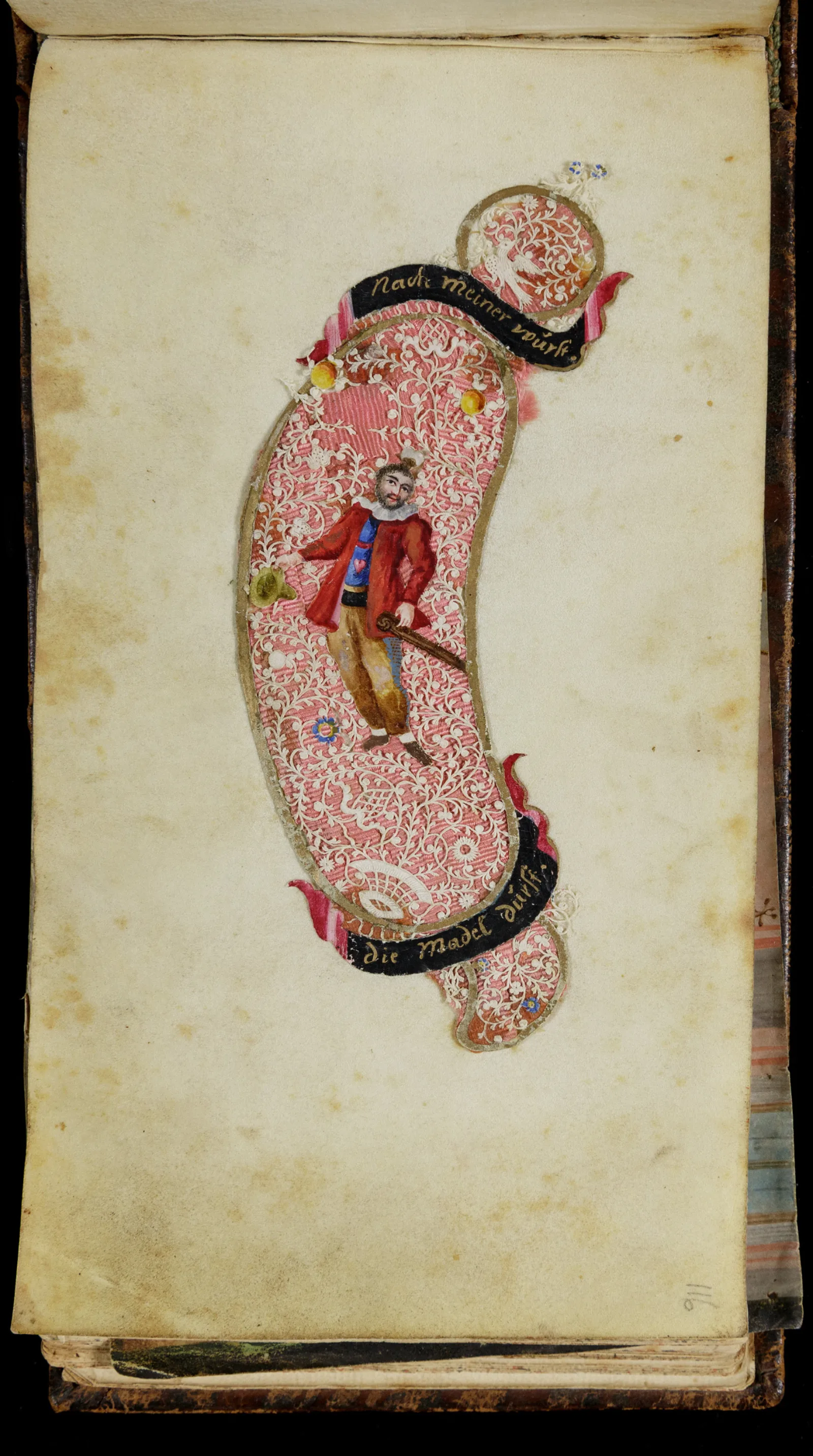Roving young German merchant Cornelius Heylwagen (or Heilwagen) (ca. 1702—after 1764) liked to have a good time while traveling. He wanted everyone to know where he’d been and with whom he’d raised a glass (or three). Luckily, he had a book for that sort of oversharing: the 18th-century equivalent of an annotated yearbook, or social media account.

Until 1716, Cornelius attended a fancy grammar school in Regensburg (which closed for a six-month plague hiatus in 1714). By 1727, he was likely working on his own as a merchant in the family business when he started his album amicorum, or album of friends. In the book, Cornelius had his friends add their dated signatures, current location, and witty slogans in many languages. Following a format that had been popular since the 16th century, some inscribers even commissioned brightly-colored paintings on vellum from local artists.

Newly-acquired by the Newberry, this volume is chock-full of hellos and goodbyes from all over Europe, with innuendos and in-jokes in (mostly) good taste. Since the surname Heyl- or Heilwagen literally means “holy wagon,” it even inspired images of Cornelius as “Virtue,” who, with a knowing look, rides a wagon straight up to Heaven.

Included in Cornelius’s album amicorum are eighteen entries written by women—an unusual thing to find in such books, which were mainly popular among male university students. Some of these women were relatives from Regensburg and his small but prosperous silver-mining hometown of Johanngeorgenstadt in Saxony. On December 28, 1729, a Christina Magdalena bid Cornelius a lengthy goodby as he set off from home yet again.

Other entries are less refined, inflected with bawdy humor and an enthusiasm for food, drink, and sport.
One of the most uproarious images is a page adorned with a doily-like sausage fashioned out of gold ink, ribbons, and cut paper. The comic figure decorating it has an inflated sense of his own attractiveness to the fairer sex, as he exclaims: “Nach meiner Wurst die Madel durst,” or “The girls thirst after my ‘sausage’”!

No nearby text explains the connection to Cornelius, but considering another friend heartily recommended that he go enjoy the wine and women in Hungary, the sausage entry was likely a gentle ribbing about Cornelius’s own real or imagined exploits.
Between 1727 and 1739 Cornelius lingered in a dozen cities, including Leipzig, Regensburg, and others over 300 miles away from Johanngeorgenstadt, such as Basel, Vienna, and possibly Budapest.
The charming painting of a globe reinforces his interest in escaping Germany, while also suggesting an inability to go much further. The snail creeping across the globe may be closing in on Japan, but Cornelius probably never made it there, nor to the Terra Incognita of Australia.
The rhyming text above (as transcribed and translated by Dominik Stoltz) cautions that he should “Beschau die Welt und ihre Tück, Geh aber auch in dich zurück,” “See the world and her malice, but retreat into yourself, too.” Interestingly, we don’t have much of a record of Cornelius’s actual life or evolving relationship status. Nor do we know if he eventually married or not. Perhaps he did keep some things private.
Yet assembling such a performatively vibrant record of his travels and widespread groups of friends could only have helped Cornelius extend and maintain his social network. Indeed, final entries from 1752 and 1758 prove that even so much later, the book still accompanied him on his travels.
About the Author
Suzanne Karr Schmidt is the Curator of Rare Books and Manuscripts at the Newberry.